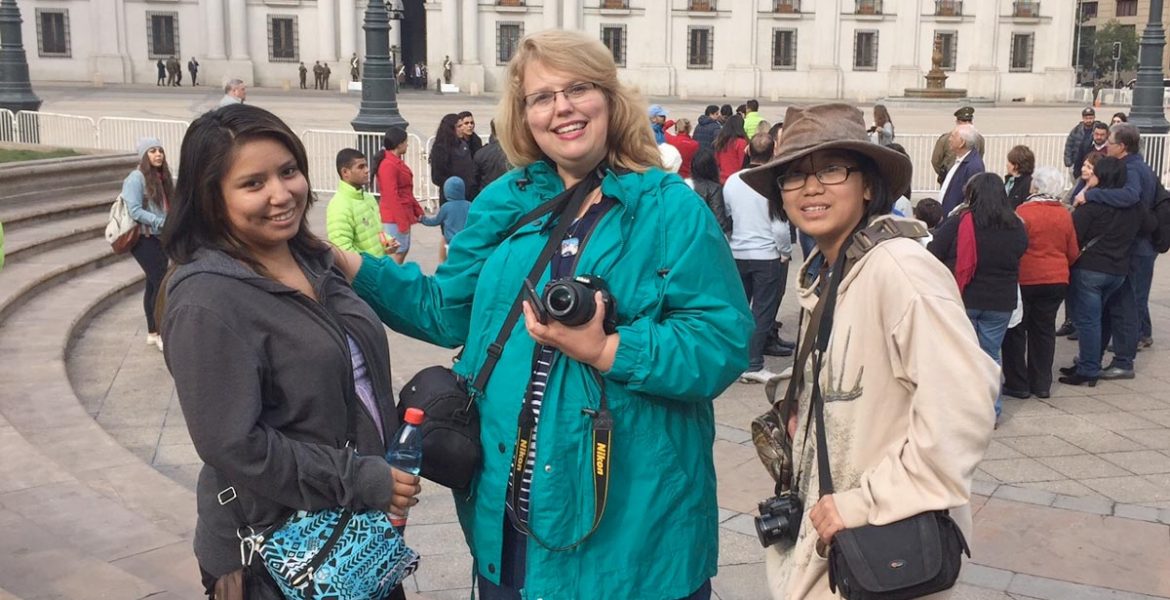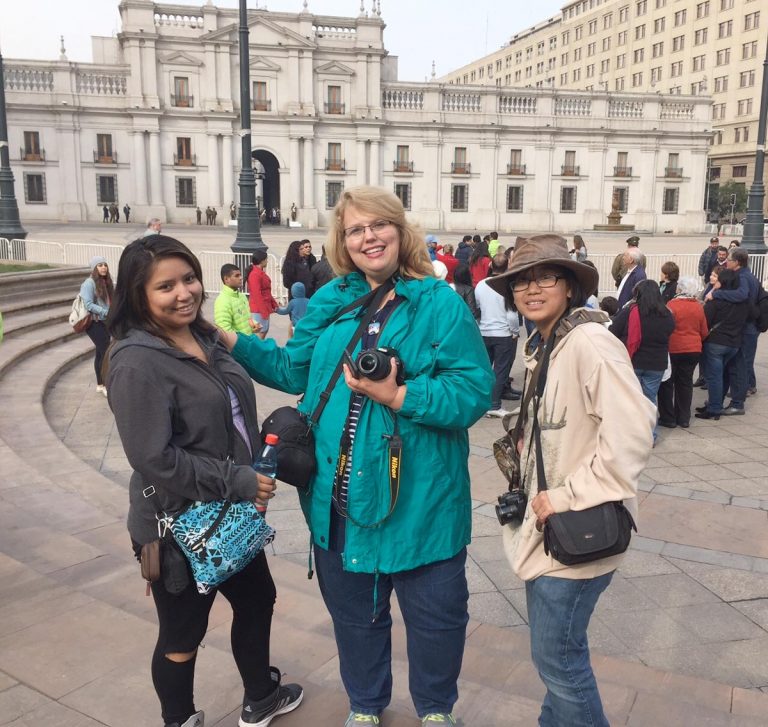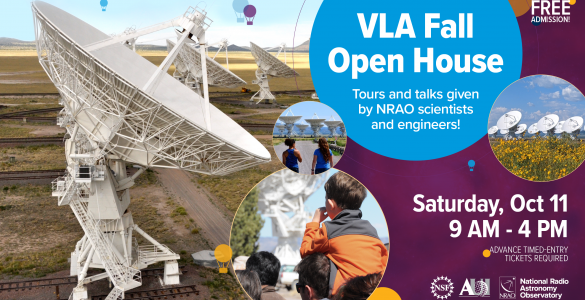Two students and a teacher from Magdalena, New Mexico, have arrived in the Chilean town of San Pedro de Atacama as part of a Sister Cities program sponsored by the National Radio Astronomy Observatory (NRAO) and Associated Universities, Inc. (AUI). Middle-school math teacher Britt Verstegen and 11th-grade students Madeline Stuteville and Samantha Secatero will spend one month living in the South American town, learning about its academic and cultural life while school is in session there during the Southern Hemisphere winter.
The program pairs Magdalena and San Pedro because both are small communities near world-leading radio telescopes. Magdalena is near the NRAO’s Karl G. Jansky Very Large Array (VLA) and San Pedro is near the Atacama Large Millimeter/submillimeter Array (ALMA), an international research facility funded by major partners in North America, Europe, and Japan.
In September, physics teacher Carola Torrejon and students Cristian Cruz and Diana Manríquez from San Pedro’s Likan Antai C-30 school will travel to Magdalena to spend a month while New Mexico schools are in session.
The two towns declared each other Sister Cities in 2006, and exchanged students and teachers the following year. The participants stayed with local residents in their host communities and gained valuable insights about their respective cultures and educational practices. The latest version of this exchange program will focus on teaching methodologies in the fields of science, technology, engineering, and mathematics (STEM).
“Both Magdalena and San Pedro, though small, rural communities, benefit from their proximity to cutting-edge astronomical research facilities. This is a common link that brings them educational opportunities, particularly in STEM fields, that otherwise would not be available,” said Mark McKinnon, NRAO’s Director for New Mexico Operations.
Vanetta Perry, Superintendent of the Magdalena Schools, said, “We are excited to participate in the Sister Cities Program with Associated Universities, Inc., ALMA, and the Very Large Array. The opportunity to provide international scientific and cultural exchanges for our teachers and students will have life-changing effects on the participants, effects that will ripple out into our educational community and benefit all our students and staff.”
Perry continued, “Opening the world to students in the context of radio astronomy excites them to learn about other cultures, other ways of living, and encourages them to explore areas of astrophysics. Knowledge of other cultures brings understanding. With understanding, acceptance. Acceptance brings peace. Here in Magdalena, we are humbled to be a part of this program and to be able to share our community with our Chilean educator colleagues and their students.”
In addition to their proximity to the telescopes, the two regions share high desert climates and include distinctive indigenous populations — the Alamo Navajo reservation in New Mexico and the Atacameno community in Chile.
Torrejon, the San Pedro physics teacher, said, “We also wish to broaden our scope to include the archaeoastronomy of the Navajo and Atacameno peoples as well as music and art.”
The VLA is the world’s most famous and productive radio telescope. Since its dedication in 1980, it has contributed substantially to advancing scientists’ understanding of nearly every aspect of astronomy. With a major technical upgrade completed in 2012, it has become essentially a new scientific instrument, providing researchers with new and unmatched capabilities.
ALMA, dedicated in 2013, is the world’s premier telescope at millimeter and submillimeter wavelengths. Located at an elevation of 16,500 feet in the Atacama Desert of northern Chile, its 66 antennas and advanced electronics have opened a new window on the Universe for astronomers. It already has made landmark discoveries in several fields of astronomy, including star and planet formation and the evolution of galaxies.
The National Radio Astronomy Observatory is a facility of the National Science Foundation, operated under cooperative agreement by Associated Universities, Inc.
###
Contact:
Dave Finley, Public Information Officer
(575) 835-7302
dfinley@nrao.edu

















